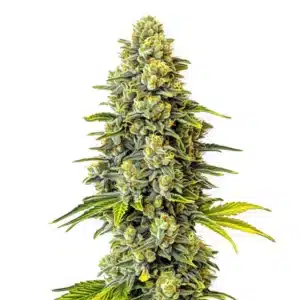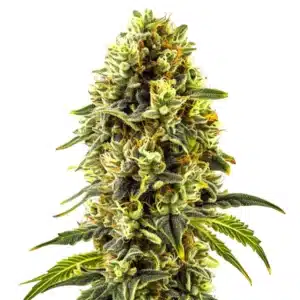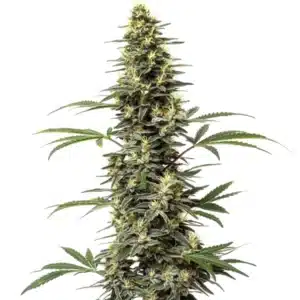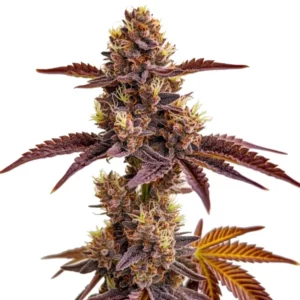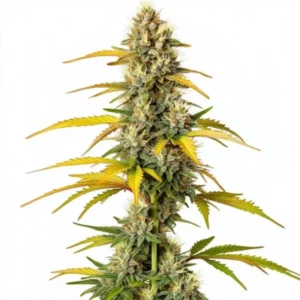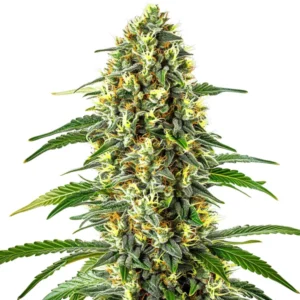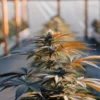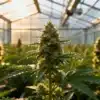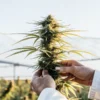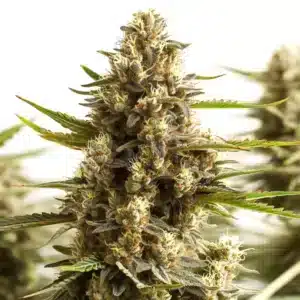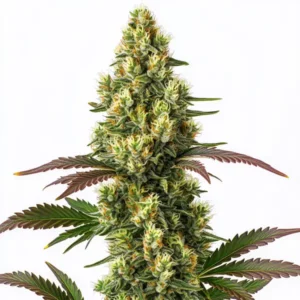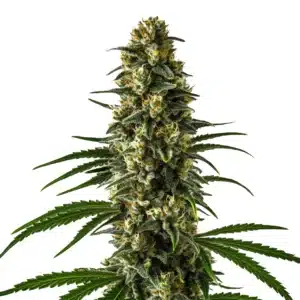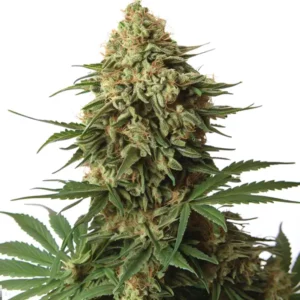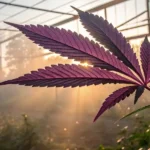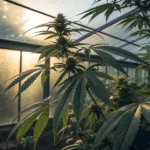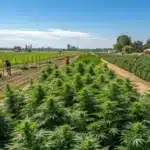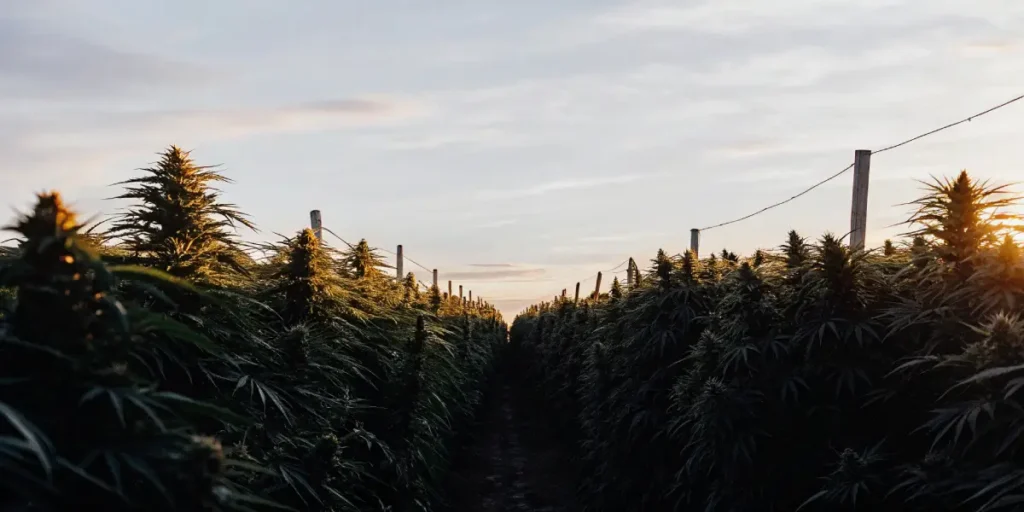
Why do cannabis plants produce reactive oxygen species? Knowing ROS in plant growth and stress response
Cannabis plants are fascinating organisms that have developed several unique mechanisms to thrive. One such mechanism is the production of reactive oxygen species (ROS). But why do cannabis plants produce reactive oxygen species? It turns out that ROS play a vital role in their growth and development.
ROS are molecules that contain oxygen and have highly reactive properties. Cannabis plants generate these molecules naturally as part of their normal metabolic processes. During photosynthesis, when plants convert sunlight into energy, ROS are formed as by-products. This might seem like a byproduct to manage, but it actually serves multiple purposes.
Recommended Strains
Original Glue
|
|
THC | 28% - 30% (High) |
|
|
Type | Feminized |
|
|
Yield | High |
|
|
Phenotype | 60% Indica / 40% Sativa |
Original Cheese
|
|
THC | 16% - 20% (Medium) |
|
|
Type | Feminized |
|
|
Yield | Medium |
|
|
Phenotype | 55% Indica / 45% Sativa |
These molecules are not just waste products. They are crucial in signaling pathways that help the plant respond to environmental stressors such as drought, high light intensity, and pathogens. So, why do cannabis plants generate reactive oxygen species? It’s all about survival and adaptation.
Reactive Oxygen Species in Cannabis Plant Growth
ROS production in cannabis plant growth is like a double-edged sword. On one hand, these molecules can cause damage if not regulated. On the other hand, they serve as signals that trigger protective mechanisms. Knowing how these molecules function can help both novice and experienced growers optimize their cultivation techniques.
For instance, when a cannabis plant experiences stress, ROS levels increase. This increase acts as a signal, prompting the plant to produce antioxidants. These antioxidants neutralize excess ROS, preventing cellular damage. By managing this delicate balance, growers can enhance plant resilience and yield.
The function of reactive oxygen species in cannabis plants is multifaceted. They are essential for the activation of defense genes, which help the plant develop resistance against various stressors. Additionally, ROS are involved in regulating plant hormones that control growth and development. This intricate balance highlights why do cannabis plants produce reactive oxygen species, as their presence is vital for adapting to changing conditions.
Moreover, reactive oxygen species production in cannabis plant growth can be influenced by external factors such as temperature fluctuations and nutrient availability. By knowing these interactions, cultivators can create optimal growing environments that minimize stress and enhance productivity. This knowledge is crucial for maintaining a healthy balance between growth and stress management.
Practical Examples of ROS in Cultivation
Imagine you’re growing a batch of cannabis and notice the leaves turning yellow. This could be a sign of stress, possibly due to high light intensity, which increases ROS production. Monitoring light levels and adjusting exposure can mitigate this stress.
Another example involves nutrient management. Over-fertilization can lead to excessive ROS, causing oxidative stress. Regularly testing soil and adjusting nutrient levels can prevent this.
In practice, when growers encounter signs of stress in their plants, immediate measures such as altering light exposure or adjusting nutrient levels can prevent further damage. By doing so, they address the underlying causes of reactive oxygen species production, promoting healthier growth. Knowing these practical examples is crucial for effective cultivation.
Furthermore, incorporating stress-reducing practices such as mulching or shading can mitigate the effects of reactive oxygen species on cannabis plant health. These methods help to stabilize environmental conditions, reducing the likelihood of ROS-induced damage. By proactively managing cultivation practices, growers can maintain robust and resilient plants.
Promos & Deals
Effects of Reactive Oxygen Species on Cannabis Plant Health
The effects of reactive oxygen species on cannabis plant health are both beneficial and potentially harmful. When managed properly, ROS can enhance stress tolerance and improve overall plant health. However, unchecked levels can lead to oxidative damage, affecting growth and yield.
High ROS levels can damage proteins, lipids, and DNA within plant cells. This damage can manifest as leaf discoloration, stunted growth, or reduced flower quality. Therefore, knowing how ROS operate within plants can be key to successful cultivation.
In knowing why do cannabis plants produce reactive oxygen species, it’s important to recognize their dual role in plant health. While they can signal for defensive responses, excessive levels can disrupt cellular integrity. This delicate balance underscores the importance of monitoring ROS levels to ensure optimal health and productivity.
Additionally, the function of reactive oxygen species in cannabis plants includes modulating the plant’s immune responses. By fine-tuning these responses, plants can better withstand pathogenic attacks and environmental stresses. Cultivators must be aware of how ROS influence plant health to effectively manage their crops and achieve desired outcomes.
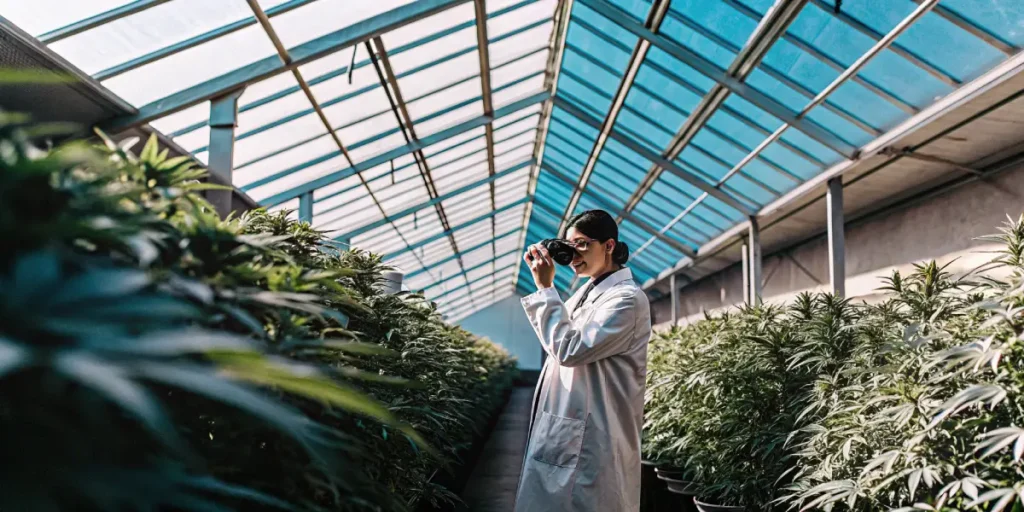
Managing ROS for Optimal Health
To maintain healthy cannabis plants, managing ROS levels is essential. One effective method is to ensure proper airflow and ventilation. This reduces heat stress and prevents excessive ROS production.
Another strategy is to choose cannabis strains known for resilience against environmental stressors. For instance, the Original Gorilla Glue strain is renowned for its hardiness and can withstand fluctuating conditions better than others.
Effective management of reactive oxygen species involves not only environmental control but also the strategic use of supplements. Integrating organic antioxidants into cultivation practices can counteract the negative effects of ROS, promoting plant vitality and resilience. These natural solutions contribute to a balanced growing environment.
Furthermore, the selection of stress-tolerant strains plays a critical role in ROS management. By choosing varieties that are naturally equipped to handle oxidative stress, growers can reduce the likelihood of damage and enhance overall plant health. This proactive approach ensures optimal cultivation results and minimizes potential issues.
How Reactive Oxygen Species Affect Cannabis Plant Metabolism
ROS play a significant role in cannabis plant metabolism by acting as signaling molecules. They are involved in regulating processes like growth, defense, and adaptation to stress. This makes them integral to the plant’s overall metabolic function.
However, too much ROS can disrupt metabolic activities. This can lead to reduced photosynthesis efficiency and impaired nutrient uptake, affecting the plant’s growth and productivity. Knowing this balance is crucial for both new and seasoned growers.
In exploring how do reactive oxygen species affect cannabis plant metabolism, it’s evident that they are vital for maintaining metabolic equilibrium. By modulating key metabolic pathways, ROS contribute to the plant’s ability to adapt to stressors and optimize resource utilization. This dynamic is central to achieving healthy and productive growth.
Additionally, the interplay between ROS and plant metabolism highlights the importance of environmental monitoring. By controlling factors such as light, temperature, and humidity, growers can influence ROS levels and, consequently, metabolic efficiency. This comprehensive approach is essential for fostering a thriving cultivation environment.
Optimizing Metabolism Through ROS Management
Regular monitoring of environmental conditions can help in managing ROS levels effectively. Temperature, humidity, and light are critical factors that influence ROS production. Keeping these in check helps optimize plant metabolism.
Additionally, selecting strains with robust metabolic capabilities can make a difference. The Original Sour Diesel is a popular choice for those seeking a strain that can handle metabolic stress well.
Optimizing the balance of reactive oxygen species production in cannabis plant growth involves a multifaceted approach. By leveraging technology such as environmental sensors and automated systems, growers can maintain ideal conditions that minimize stress and enhance metabolic function. This precision agriculture technique is invaluable for modern cultivation.
Moreover, knowing the genetic predispositions of different strains can guide growers in selecting varieties that naturally excel in managing ROS levels. By aligning cultivation practices with the inherent strengths of chosen strains, cultivators can maximize efficiency and output, achieving superior results in cannabis production.
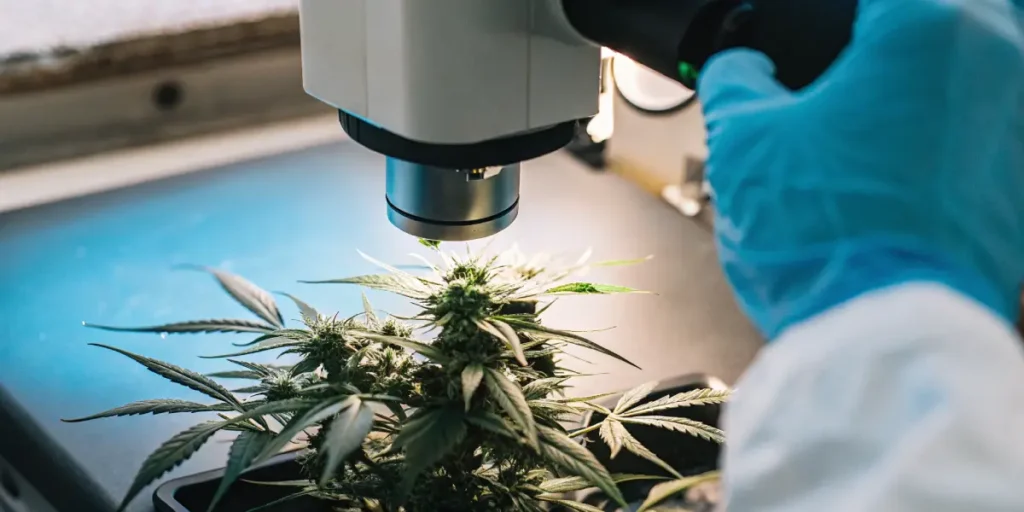
FAQs
What exactly are reactive oxygen species?
Reactive oxygen species are highly reactive chemicals containing oxygen. They are produced naturally in cannabis plants during normal metabolic processes like photosynthesis. While they can be harmful in excess, they serve important signaling functions that help plants respond to stress.
In cannabis cultivation, managing ROS levels is crucial. They influence everything from growth and disease resistance to flower quality. Growers must understand this dynamic to optimize their cultivation practices and achieve better yields.
Knowing why do cannabis plants produce reactive oxygen species involves recognizing their dual role as both signaling agents and potential stressors. By facilitating communication within the plant, ROS enable adaptive responses to environmental changes. This intricate dynamic is pivotal for successful cultivation management.
Furthermore, the effects of reactive oxygen species on cannabis plant health are multifaceted, influencing various physiological processes. By maintaining a balance between production and neutralization, growers can ensure that ROS serve their beneficial roles without causing harm. This knowing is key to achieving optimal growth conditions.
How can I tell if my cannabis plants have high ROS levels?
Visible signs of high ROS levels in cannabis plants include yellowing or browning leaves, stunted growth, and reduced flower production. These symptoms can indicate oxidative stress, a common result of excessive ROS.
Monitoring environmental factors like light intensity and nutrient levels can help manage ROS production. Using these observations, growers can make necessary adjustments to mitigate stress and maintain healthy plants.
Identifying the signs of excessive ROS is crucial for timely intervention. By carefully observing plant morphology and growth patterns, cultivators can detect early indicators of oxidative stress, allowing for swift corrective actions. This proactive approach is essential for minimizing damage and optimizing plant health.
Moreover, leveraging tools such as spectral analysis or stress detection sensors can enhance the ability to monitor ROS levels. These technologies provide valuable insights into plant health, enabling growers to fine-tune their cultivation practices and achieve superior outcomes in cannabis production.
Can I reduce ROS production in my plants?
Yes, you can reduce ROS production through various cultivation practices. Proper light management, nutrient regulation, and adequate ventilation are effective strategies. These help to minimize stressors that lead to excessive ROS.
Additionally, choosing stress-resistant strains such as Original Skunk 47 can naturally lower ROS levels, as these plants are better equipped to handle environmental challenges.
Implementing strategies to reduce reactive oxygen species production involves a comprehensive approach to cultivation management. By optimizing environmental conditions and selecting stress-tolerant strains, growers can effectively manage ROS levels and promote healthy plant growth. This integrated method is key to achieving optimal results.
Furthermore, incorporating organic amendments and antioxidants into soil and nutrient regimens can enhance the plant’s natural defenses against oxidative stress. These practices not only support healthy growth but also contribute to improved yield and quality, making them essential components of successful cannabis cultivation.
Why do some strains handle ROS better than others?
Certain cannabis strains have evolved to thrive in challenging environments. These strains often have better mechanisms for managing ROS, such as increased antioxidant production or more efficient metabolic pathways.
For example, strains like Original Gorilla Glue are known for their resilience, making them ideal for growers who want a hardy plant with less ROS-related issues. Selecting the right strain can make a significant difference in cultivation outcomes.
The inherent ability of some strains to manage reactive oxygen species more effectively is often a result of evolutionary adaptations. These strains possess genetic traits that enhance their resilience to environmental stressors, allowing them to thrive under conditions that might challenge other varieties. This genetic advantage is crucial for successful cultivation.
Moreover, knowing the function of reactive oxygen species in cannabis plants can guide breeders in developing new strains with enhanced stress tolerance. By selecting for traits that improve ROS management, breeders can create varieties that offer superior performance and yield potential, catering to the needs of diverse cultivation environments.
Are there natural ways to manage ROS in cannabis plants?
Yes, there are natural methods to manage ROS in cannabis plants. Incorporating organic compost and antioxidants into the soil can help balance ROS levels. These natural substances support the plant’s ability to neutralize excess ROS.
Additionally, maintaining optimal environmental conditions such as temperature and humidity will reduce stress, thereby decreasing ROS production. These practices not only promote healthier growth but also contribute to better yields.
The use of natural methods to manage reactive oxygen species production in cannabis plant growth is an effective way to enhance plant health and mitigate stress. Organic amendments such as compost and biochar can improve soil structure and nutrient availability, supporting robust growth and development.
Furthermore, employing companion planting techniques can create a more balanced ecosystem, reducing pest pressure and enhancing plant resilience. These natural strategies not only support sustainable cultivation practices but also contribute to improved plant vitality and productivity, making them a valuable addition to any grower’s toolkit.


